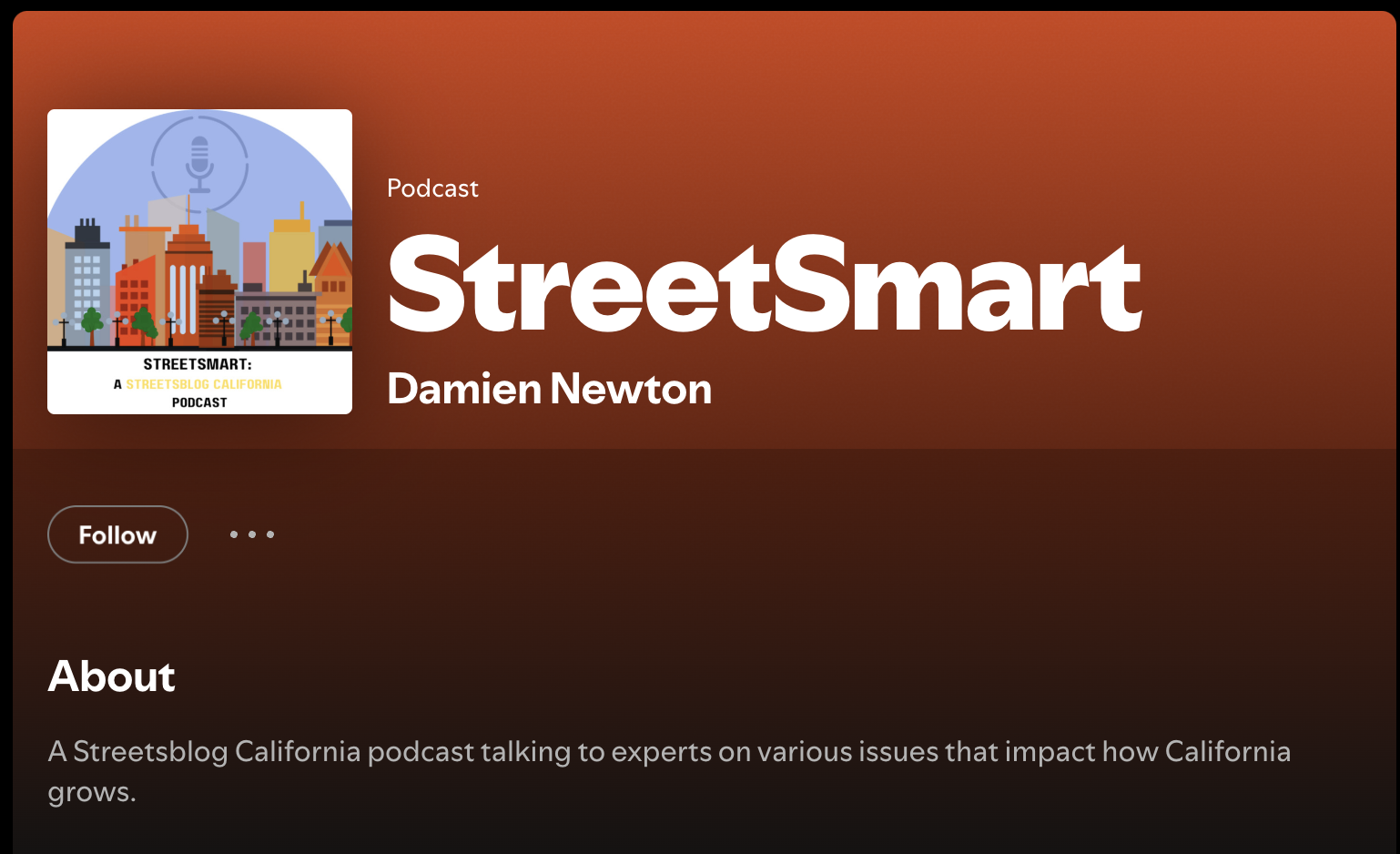Yesterday's joint meeting between the California Transportation Commission (CTC) and the California Air Resources Board (ARB) focused on a new report from the ARB that explored reasons behind rising emissions from California's transportation sector. The report concluded that California is not on track to meet state climate goals on greenhouse gas emissions because state residents are driving more.
The presentation of the report's conclusions - which are accurate and timely - met with some resistance from members of the CTC, who are responsible for allocating a large portion of the state's transportation funds. Several commissioners pushed back on the report's focus on VMT—vehicle miles driven—as a way to measure changes in greenhouse gas emissions.
“VMT is one measure of success,” said Commissioner Paul Von Konynenburg. “Another metric is gas and diesel consumption—if that were to go down over the next ten years, that would also reflect a decrease in GHGs. We want more metrics of success.”
“We shouldn't rely on one tool to do everything,” Commissioner Jim Earp said later. “For example, reducing VMT is only one tool, but it's like a hammer.”
But the ARB report, which analyzed a decade's worth of transportation planning at the regional level to see whether it was having the desired effect of reducing emissions, discusses in several places the connection between VMT and fuel consumption, and why it is used as a performance measure.
For one, the report tracks regions' Sustainable Communities Strategies plans, which measure their own progress in terms of VMT reductions. Greenhouse gases cannot straightforwardly be directly measured, and data sources are limited. VMT is calculated using data on gas and diesel consumption (along with other factors including fuel efficiency of different vehicles and speeds), but that data is not readily available at the scale needed.
Is this getting too much into the weeds? Maybe. But yesterday's daylong meeting left the strong impression that the Transportation Commissioners had not read the report they were supposedly discussing.
Rather than address the report's conclusion that California needs to shift the way it plans and funds transportation, their comments mostly tried to poke holes in it.
Commissioners didn't even address the report's urgent recommendations for action. While they could have had a discussion on whether creating a State Mobility Action Plan, as suggested by the report, was a good idea, a bad idea, or even something they would want to be a part of, they denigrated the idea that some focus on VMT, a well established metric for calculating transportation emissions, was reasonable.
And that's distressing because these issues are complex, interconnected, and need both deep discussion and quick action. The CTC has an outsized influence on transportation funding decisions, but its members refuse to see what the Air Resources Board research has been telling them for years. Instead, they reacted defensively ("Be gentle with us," said Commissioner Lucy Dunn, even though ARB staff had several times pointed out the lack of progress was not any one agency's fault) and they deflected the discussion to other concerns.
ARB chair Mary Nichols tried to keep the discussion focused on the report. “S.B. 375 was an attempt to bring local governments and MPOs into the climate process,” she said, and to “recognize that even if we were to achieve our [climate] goals, we could not maintain them without a land use and transportation system that supported them. The legislature agreed on measuring greenhouse gases per capita, not cap growth or anything, but just to recognize that we have to grow in a smart way.”
She pushed the gathered members of the two agencies to address the report's recommendations, and asked what that would look like. “If we agree that our joint and several missions could lead us to agreement,” she asked, “Then where, and how would we do that? We are not required to respond in any particular fashion; it's just that these issues need to be addressed.”
UC Professor Daniel Sperling, a member of the Air Resources Board, was more forceful:
The first step is we need to acknowledge we've got serious serious problems and almost every metric is going in the wrong direction, and not just environmentally. We need to be outcome oriented.
If you look at the big picture, we see congestion is getting worse. Safety is getting worse. We are seeing an increase in fatalities, for the first time - a per capita increase - in history. The cost of travel is going up--the cost of buying a new car, of owning and operating one.
And transit ridership—we used to not pick on transit, but we've got to be more clear-eyed. Transit serves less than two percent of travel miles in this state, and it's shrinking. That's related to equity and accessibility, that translates to people not having access to cars in a car-centric system, which isolates people.
Transportation greenhouse gas emissions are going up... Minor incremental improvements will not address most of these. We've got to acknowledge that something big and different has to be done. We've got a real problem here.
Perhaps the context is the problem. At a big public meeting, speeches are made, positions are established, and personal agendas are aired, but little in the way of actual back-and-forth conversation about specifics takes place. But the fact that CTC members largely ignored Professor Sperling's words is worrisome.
ARB staffer Carey Knecht, presenting the report, said there is a “fundamental disconnect between factors shaping growth and development and the outcomes the state wants. California needs more significant changes.”
“Overall state funding is not aligned with climate goals,” she said. The action plan in the report suggested some improvements, including to funding guidelines and plans, and how to better keep track of where state money goes and what results from state investments.
CTC commissioners did not seem interested.






